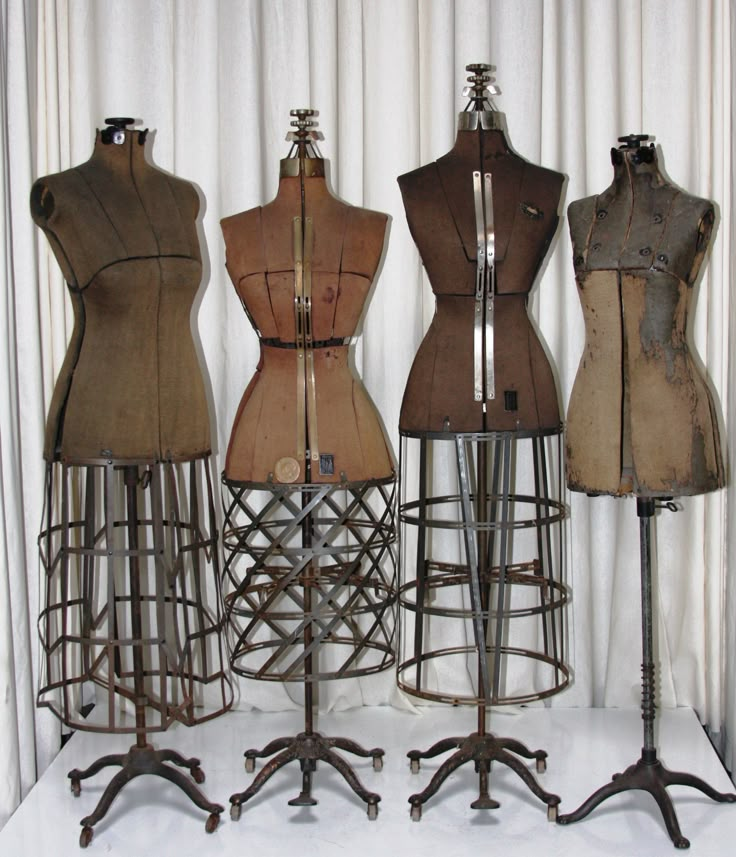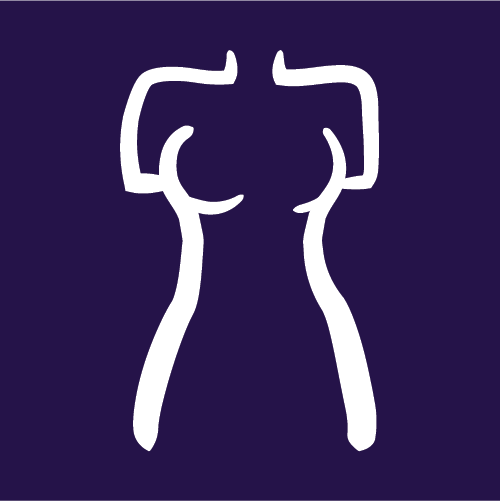
How to Choose: What Dress Form Is Right for Me?
Share
Wondering what dress form is right for me? This guide will help you choose by explaining the different types—professional, adjustable, custom, and DIY—so you know exactly what suits your sewing needs.
Key Takeaways
- Choose the right dress form based on your sewing goals: Professional for sturdiness, Adjustable for versatility, and Custom for a perfect fit.
- Key features to consider include collapsible shoulders, stability, and the ability to customize sizing, which all enhance the fitting experience.
- Budget wisely: Dress form prices range from economical DIY options under $50 to high-end custom models starting at $1499, helping you find the best fit for your purse.
Understanding Different Types of Dress Forms
Dress forms come in various shapes and sizes, each designed to meet different needs and purposes. As a garment sewist and fashion instructor, I’ve had the opportunity to use a wide range of dress forms, from professional dress forms built for durability and performance to versatile adjustable forms and highly personalized custom forms. The key to choosing the right one lies in understanding what each type offers and how it aligns with your sewing goals.
The three primary types of dress forms are professional, adjustable, and custom. Each has its own unique set of features, pros, and cons, and knowing these differences can help you make an informed decision.
Whether you’re looking for a straightforward, cost-effective option or a high-end, tailor-made solution, there’s a dress form out there that’s perfect for you.
Professional Dress Form Overview
Professional dress forms are the go-to choice for many dressmakers and designers. These forms are specifically designed for dressmaking and design, offering professional style lines and significant space savings. One of the standout features of professional dress forms is their collapsible shoulders, which make fitting tight garments a breeze. However, it’s important to note that these forms can face issues like breaking mechanisms with heavy use.
While professional dress forms are excellent for ready-to-wear garments, they do have some limitations. For instance, they may not be the best choice for fitting personal body shapes for real people due to their generic design when dressed.
Despite these drawbacks, the precision and durability of professional dress forms make them a worthwhile investment for those serious about garment creation.
Adjustable Dress Form Insights
Adjustable dress forms offer a high degree of versatility, making them a popular choice for many sewists who sew with an adjustable form.
These forms can be customized to fit various body measurements, including:
- bust
- waist
- hips
- neck
- torso height
This flexibility allows for a more tailored fit, accommodating different body materials shapes and alter cover subject shapes and sizes for women to scale with pins, ensuring that each interested person can find the right developed model fit at this point in line. These data details measure ensure a perfect soft image match for everyone, as highlighted in threads magazine. If you have any questions or idea, feel free to contact us at the table. Our service is amazingly helpful.
However, achieving an accurate fit for asymmetrical figures can be challenging and may require padded more padding.
One of the main advantages of adjustable dress forms is their ability to be modified to match an individual’s unique body shape. Techniques like padding can help accommodate asymmetries and other body characteristics. Despite these challenges, adjustable dress forms remain a versatile and practical option for many sewists.
Custom Dress Forms Explained
Custom dress forms represent the pinnacle of personalized garment fitting. Created using advanced technology such as 3D body scanning, these forms offer a precise fit tailored to individual body measurements. The process involves capturing a 3D body scan, which accounts for individual body asymmetries to ensure a better fit. This personalized fit enhances the accuracy of garment fitting, making custom dress forms a valuable tool for serious sewists.
While custom dress forms offer significant benefits, they do come with a higher price tag and may require periodic updates to maintain their accuracy. Despite these costs, the unparalleled fit and customization options make custom dress forms an excellent investment for those looking to achieve the ultimate fit.
Standard Dress Forms: Pros and Cons
Standard dress forms are a popular choice for hobbyists and beginners due to their affordability and ease of use. These forms are generally more cost-effective than custom options, making them accessible to a wider audience. Additionally, standard dress forms often come pre-sized, eliminating the need for complex adjustments and allowing users to get started quickly.
However, standard dress forms do have their limitations. They may not accurately reflect the variety of body shapes and sizes, which can be a drawback for those looking for a precise fit. Despite these limitations, the simplicity and affordability of standard dress forms make them a viable option for many sewists.
Adjustable Dress Forms: Flexibility and Challenges
Adjustable dress forms offer a high degree of customization, enabling users to replicate their unique body shapes through padding. By starting with a smaller form and adding padding to build up the shape, sewists can create a closer match to their own body. This flexibility makes adjustable dress forms a versatile tool for a variety of sewing projects.
However, there are challenges associated with adjustable dress forms. Maintaining stability during use and ensuring the form supports the draped draping process effectively can be difficult. Additionally, adjusting a standard dress form for individual body characteristics may require additional padding, which can be time-consuming and complex.
Despite these challenges, the versatility and adaptability of adjustable dress forms make them a valuable addition to any sewist’s toolkit.
DIY Dress Forms: Economical Choices
For those on a budget, DIY dress forms present an economical alternative. Methods like creating duct tape dress forms or foam body casts can cost under $50, making them a budget-friendly option. However, duct tape dress forms tend to be slightly larger than the actual body and may not accurately reflect its shape.
DIY dress forms do come with their limitations. The rigid structure of duct tape forms can make them impractical for pinning fabric during sewing. Additionally, foam body casts can be challenging to fit accurately, often resulting in a form that does not represent body asymmetries well.
Despite these drawbacks, DIY dress forms remain a cost-effective choice for those willing to put in the time and effort.
Custom Dress Forms: The Ultimate Fit
When it comes to achieving the ultimate fit, custom dress forms are unmatched. Created using detailed 3D scans, these forms offer a precise fit tailored to individual body measurements. This personalized fit adapts closely to the unique contours of the individual’s body, enhancing garment fitting accuracy. For those serious about their sewing, custom dress forms provide an unparalleled level of precision.
Bespoke Forms, for example, offers a 3D body scan custom dress form at an affordable price while maintaining professional quality. Although custom dress forms can be expensive, their ability to provide a perfect fit makes them a worthwhile investment for dedicated sewists.
Key Features to Look For in a Dress Form
- Choosing the right dress form involves considering several key features that can impact usability and investment value. Here are some important aspects to consider:
- Professional dress forms often include markings that assist in precise pattern making, which is crucial for creating well-fitted garments.
- A good dress form stand should have an easily adjustable height.
- The stand should have a heavy base for stability.
- Smoothly rolling wheels for mobility are also a desirable feature.
By keeping these features in mind, you can select a dress form that meets your needs effectively.
Consider these features when selecting a dress form, as they can significantly influence your sewing experience. From collapsible shoulders to shaping and sizing options, understanding these features will help you make an informed decision that suits your needs.
Collapsible Shoulders
Collapsible shoulders are particularly useful for fitting tight garments, as they allow for easier manipulation during the fitting process. This feature is found on some dress forms designed for enhanced versatility and can be incredibly helpful for achieving a better fit.
Shaping and Sizing Options
Dress forms come in various shapes and sizes, which may not always correspond with standard clothing sizes. Select a dress form that accurately reflects your body shape and is of the same shape to ensure an accurate fit and proportions.
Considering the different shapes and sizes available will help you find a dress form that is shaped to meet your specific needs.
Stability and Stands
A reliable dress form stand should feature a sturdy base to ensure stability during use. Additionally, an effective stand must include a system to easily adjust height for optimal usability.
These features are essential for maintaining the dress form’s stability and ease of use.
Padding Your Dress Form for Accuracy
Padding your dress form is a crucial step in achieving an accurate fit. Techniques like using quilted muslin and thrifted shoulder pads can enhance the fit of a dress form to match an individual’s contours. Wearing a well-fitting bra on the dress form helps ensure the padding accurately reflects the bust shape.
The process of padding and adjusting a dress form is iterative, requiring regular reassessment and revisions to achieve the desired results. Adding layers of fiberfill around the bra area can enhance the simulation of back flesh shape, further improving the accuracy of the dress form.
Investing time in padding your dress form helps achieve a fit that closely matches your own body.
Budget Considerations
Budget is a significant factor when choosing a dress form. The cost range for adjustable dress forms is typically between $200 to $500, while budget display forms are available for around $50, making them a cost-effective option for students. Affordable foam dress forms can start at about $299, though they lack professional features.
Custom dress forms, on the other hand, can be quite expensive, with high-end options starting at $1499 for custom 3D scanned models. However, Bespoke Forms offers high-end custom dress forms for $700 using a 3D scan.
Understanding these cost differences and considering your money budget will help you make an informed difference purchase.
Summary
Choosing the right dress form is a journey that involves understanding your needs and exploring different options. From the affordability of standard dress forms to the ultimate fit of custom forms, each type offers unique advantages and challenges. By considering key features like collapsible shoulders, shaping and sizing options, and stability, you can find a dress form that suits your specific requirements.
Ultimately, the right dress form will enhance your sewing experience, making the process of creating garments more enjoyable and precise. So, take the time to explore your options, consider your budget, and invest in a dress form that will serve you well for years to come.
Frequently Asked Questions
What are the main types of dress forms?
The main types of dress forms are professional, adjustable, and custom, each tailored to enhance your sewing experience. Choose the one that best suits your needs and watch your creativity flourish!
Are custom dress forms worth the investment?
Absolutely, custom dress forms are worth the investment as they offer a perfect fit tailored to your unique measurements, enhancing your sewing projects and boosting your confidence!
What is the cost range for custom dress forms?
Custom dress forms start from $1499, but Bespoke Forms offers a cheaper option of $700, offering a versatile solution for sewists without breaking the bank. Invest in one to elevate your sewing projects today!
What features should I look for in a dress form stand?
Look for a dress form stand that offers a sturdy base, adjustable height, and smooth-rolling wheels for easy mobility. These features will ensure both stability and convenience as you create your designs!
